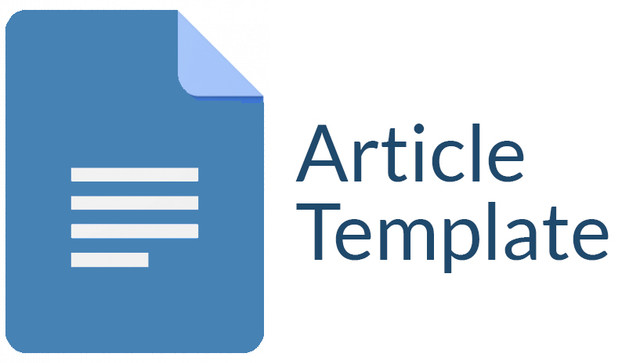Pemanfaatan Lingkungan Wisata Alam sebagai Sumber Belajar Sains dalam Upaya Meningkatkan Literasi Lingkungan Siswa SD
Keywords:
science learning, local potential, natural tourism, environmental literacy, elementary schoolAbstract
This study aims to develop a science learning model based on the local potential of natural
tourism to enhance elementary school students’ environmental literacy. The natural tourism sites in Magetan
Regency were utilized as contextual learning resources integrating ecosystem concepts, conservation
principles, and local wisdom. The research employed a Research and Development (R&D) approach using a
modified Borg & Gall model, consisting of needs analysis, planning, product development, limited trials,
revision, field testing, and final product refinement. The participants included fifth-grade elementary school
students, science teachers, and subject-matter experts. Data were collected through observation,
questionnaires, interviews, and environmental literacy tests, and analyzed using both quantitative descriptive
and qualitative methods. The findings reveal that science learning based on local natural tourism significantly
improves students’ conceptual understanding, environmental awareness, and critical thinking skills. The final
product, consisting of learning tools (lesson plans, student worksheets, and an interactive e-book), was rated
highly valid and effective based on expert validation, teacher practicality assessments, and the improvement
of students’ environmental literacy scores. These results highlight the importance of utilizing local potential
as a relevant learning source to foster ecological awareness from an early age.
Downloads
References
Arikunto, S. (2019). Prosedur penelitian: Suatu pendekatan praktik (ed. revisi). Rineka Cipta.
Borg, W. R., & Gall, M. D. (2003). Educational research: An introduction (7th ed.). Allyn & Bacon.
Cohen, L., Manion, L., & Morrison, K. (2018). Research methods in education (8th ed.). Routledge.
https://doi.org/10.4324/9781315456539
Creswell, J. W., & Creswell, J. D. (2018). Research design: Qualitative, quantitative, and mixed
methods approaches (5th ed.). SAGE Publications.
E-Journal Hamzanwadi. (2022). Pengembangan LKPD tema lingkungan “Sahabat Kita” berbasis
potensi lokal Lombok dengan metode POE untuk meningkatkan literasi lingkungan siswa kelas
V SD [Development of environmental LKPD “Our Friend” based on Lombok local potential
using POE method to improve environmental literacy of 5th grade elementary students]. Jurnal
Ilmiah Pendidikan Dasar Indonesia, 7(2), 110–124. https://ejournal.
hamzanwadi.ac.id/index.php/jipdi/article/view/xxxx
Fraenkel, J. R., Wallen, N. E., & Hyun, H. H. (2021). How to design and evaluate research in
education (10th ed.). McGraw-Hill Education.
Idaqu Journal. (2021). Implementasi pembelajaran berbasis lingkungan dan kearifan lokal di kelas
IV sekolah dasar [Implementation of environment- and local wisdom-based learning in 4th
grade elementary school]. Jurnal Pendidikan Dasar, 3(2), 45–58.
https://jurnal.idaqu.ac.id/index.php/pendas/article/view/xxxx
Jurnal FKIP Unismuh Makassar. (2021). Pemanfaatan lingkungan alam sebagai sumber
pembelajaran [Utilization of natural environment as a learning resource]. Jurnal Pendidikan
Sains, 9(1), 55–64. https://journal.unismuh.ac.id/index.php/pendidikan/article/view/xxxx
Kuo, M., Barnes, M., & Jordan, C. (2019). Do experiences with nature promote learning? Converging
evidence of a cause-and-effect relationship. Frontiers in Psychology, 10, 305.
Downloads
Published
Issue
Section
License

This work is licensed under a Creative Commons Attribution-ShareAlike 4.0 International License.
Authors who publish with this journal agree to the following terms:
1. Copyright on any article is retained by the author(s).
2. The author grants the journal, right of first publication with the work simultaneously licensed under a Creative Commons Attribution License that allows others to share the work with an acknowledgment of the work’s authorship and initial publication in this journal.
3. Authors are able to enter into separate, additional contractual arrangements for the non-exclusive distribution of the journal’s published version of the work (e.g., post it to an institutional repository or publish it in a book), with an acknowledgment of its initial publication in this journal.
4. Authors are permitted and encouraged to post their work online (e.g., in institutional repositories or on their website) prior to and during the submission process, as it can lead to productive exchanges, as well as earlier and greater citation of published work.
5. The article and any associated published material is distributed under the Creative Commons Attribution-ShareAlike 4.0 International License









